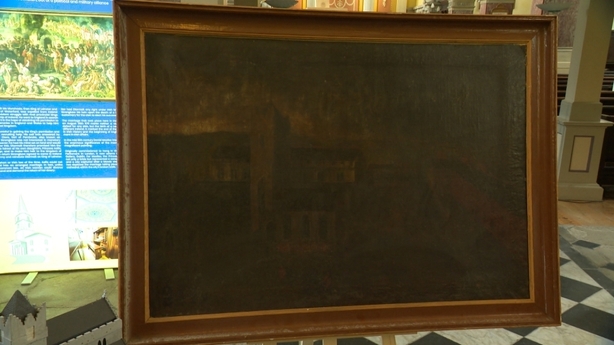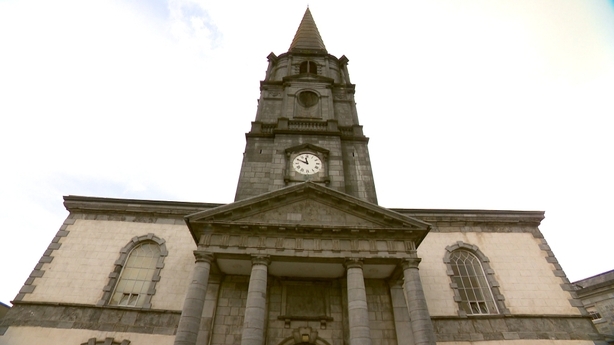A major restoration project is to be carried out on a painting which was found recently in an attic in a Waterford cathedral and is now thought to be about 300-years-old.
The artwork was discovered by Dean Bruce Hayes of Christ Church Cathedral in the city about three months ago while he was searching for a baptismal jug.
Because of the painting's now-realised importance, funding has been secured from the Heritage Council to carry out cleaning and restoration.
"I didn't quite realise how significant it was at first, but our investigations and our research led us on a very interesting journey indeed," Dean Hayes said today.
"We know it's an 18th century oil of the medieval cathedral that was built around 1050 and it's remarkable in the fact that it's one of the few pictorial records of Waterford city from the medieval period.
"It's quite an interesting record of the building and the site we're standing on at the moment because there's very little to compare it to."
Next on the agenda is the appointment of a conservatoire who will meticulously clean and examine the piece.
"Hopefully some of the scene then will unfold and the original colours and things will come out again and be able to clearly be seen," Dean Hayes said.
"Then the end part of the journey will be when it's returned to the cathedral and we're able to hang it for the public to view. It's great to think that part of Waterford's heritage will be available for future generations to enjoy.
"We're hoping that we're going to be back to how it was when it was first painted."


That research in recent months has allowed experts to "date the painting" to approximately the 1720s, because of the presence of a wall in the foreground which it is known was built by that time, the shape of the building itself, as well as other buildings nearby which were also present around then.
Dr Blaithin Hurley, local history librarian in Waterford and lecturer in art history with the Open University, said it's "very typical" of Irish art of that era.
"It is in some ways what we would kind of almost say is slightly primitive, it doesn't have the structure that you might expect of maybe Italian or French art of that time, but it has a lovely feel and what I love about it is that not only is it showing us a view of the cathedral that we don't normally see, it's also showing us life around it, buildings around it, and that helps us date it."
There is "no clue" at the moment as to who painted it, Dr Hurley said.
"Absolutely none and I wouldn't like to speculate at this stage, but I'm keeping my fingers crossed that when we do clean it, that particularly the right hand corner there is very dark and very black and I am keeping my fingers crossed that it will reveal a name and, hopefully, a recognisable name and that would give us even more of a story to tell," she said.
Director of the Waterford Treasures group of museums, Eamonn McEneaney, described it as "a wonderful discovery" which provides a record of the area from three centuries ago, and beyond.
"The great thing about the painting is that it captures the cathedral as it was in the middle ages even though the painting itself is from the 18th century," he said.
"What we're looking at now of course is the modern cathedral built in the 1770s, but that painting shows the one that preceded that and in fact in that painting we can see two phases of the cathedral.
"We can see the early Romanesque cathedral, when Strongbow and Aoife were married in the church that's where they would have been married, on the fall of Waterford on 25 August in 1170, and then it shows the big gothic cathedral that was built by, or at least endowed by, King John of England.
"So it really preserves that for future generations, what was there in the past."
While they are hoping for a "pleasant surprise" regarding who might have painted it, Dean Hayes is being realistic and not comparing the discovery to that of the famous Caravaggio, The Taking of Christ, found in a Jesuit Fathers-owned house in Dublin in 1990.
"I don't think that's very likely but it's very important in our local context here in Waterford that it's part of our heritage for the city of Waterford, for the people of Waterford, to be able to enjoy and to treasure," he said.






